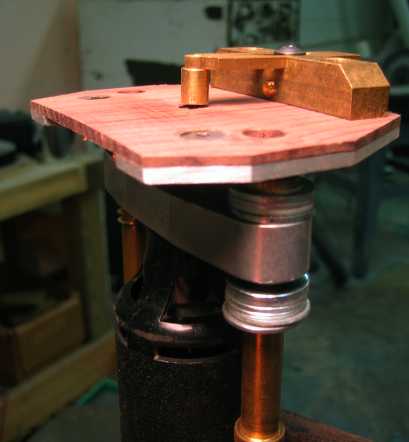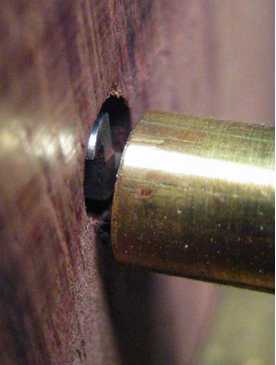With the amount of tearout you appear to have I would not recommend
filling it at all. Epoxy fill would require using epoxy to glue the bridge as
well, and would give you relatively low heat resistance, and less creep
resistance than hide glue. Using hide glue and sawdust may give peace of
mind that there isn't a gap, but won't have much to offer structurally. If
the pieces are large enough to cleanly remove from the bridge I feel the
best method is to glue them back to the top. In your case I don't know
that would be necessary.
When I glue bridges I don't remove the finish all the way to the edge. This
can be difficult to do cleanly, but my main concern is finish cracking when
pressed against the sides of the bridge. This can happen with humidity
fluctuations or more often with even minor creeping. It doesn't happen
often, and if it is properly glued it should never creep in an ideal world,
but if you want it to look good in 20 years you can't always count on ideal
conditions through that time. Again, it's not too common a problem, but I
do see it occasionally.
I actually recess a small lip around the edge of the bridge. This way you
can have a solid wood to wood contact, with the edge of the bridge kind
of floating over the finish around the perimeter. The lip on the bridge
should be exactly or very slightly less then the ledge from the top/gluing
surface to the finish surface. This addresses the stress riser that Barry
mentioned while giving you a very clean look. I think I stole this technique
from Collings, but it's been so long that I don't remember.

|



